Revision plumbing hatches for the bathroom and toilet: types, placement rules, mounting features
For the installation of communications in apartments and private houses, two methods are used: open and closed. With the open method, all pipes and devices are in plain sight, while with the closed method they are masked by false walls, partitions or boxes.
To provide access to the equipment, plumbing hatches for the bathroom and toilet are used: the dimensions of the devices usually depend on the dimensions of the hidden pipelines and the number of serviced devices.
The content of the article:
Designation of inspection hatches in bathrooms
A distinctive feature of modern bathrooms and toilets is a thoughtful design, as a result of which the aesthetic side of the finish comes to the fore. The technical devices that ensure comfortable adoption of water procedures or the convenience of using the toilet are hidden behind thin structures made of plastic or drywall.
Permanent pipe maintenance is not required, but periodically there is a need to use stop valves. For example, to cut off the water supply to the kitchen in connection with the replacement of the faucet, you need to turn off a certain tap.
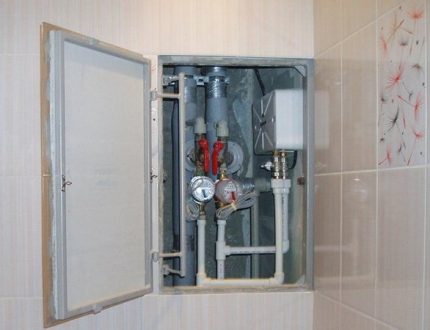
If the bathroom is completely sheathed with plastic or tile, more hatches will be required. Suppose one of the nodes that needs constant access is the installation location of a bath water trap. If protective screen if it is deaf, it will have to be dismantled every time a blockage occurs in the pipe or a leak occurs at the junction of the siphon parts.
We can conclude that any components and devices that require regular inspection should be in free availability. And with a full tiling of rooms with plastic or plastic, this can be achieved only with the help of technical hatches.
What you need to provide access to
For easier repair work, the pipeline supplying water to the apartment or house is divided into sections convenient for maintenance. Each individual section, if necessary, is cut off by a valve or ball valve mounted on the pipe. If this is possible, most of the valves are mounted in one place.

When all significant locking, regulating and water-folding devices are masked behind a false wall, but concentrated in one place, it is much easier to build a hatch to access them. The door will be large in size, but this will not damage the appearance of the partition, nor the functionality of the hatch.
Modern apartments are equipped with so-called blocks or input nodes. The standard assembly, in addition to ball valves, has a water purification filter, a couple of metering devices, a pressure reducer.
The filter is often installed on the bypass so that it can be flushed with a reverse water flow. All units are equipped with ball valves for quick removal due to repair or replacement.
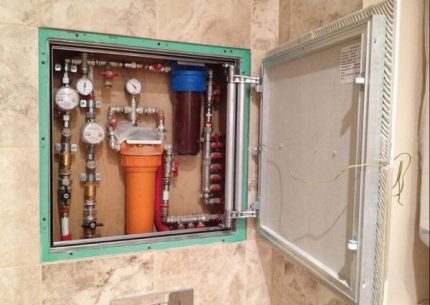
In the combined bathroom or toilet is a sewer riser. Parallel to it are pipes of centralized hot water and hot water systems.
If the angle with vertically placed trunks is closed decorative protective box, then a hatch is also installed on it - opposite the stopcocks. As you can see, there are several options for placing the revision hatch in the bathroom, as in the toilet.
Types of plumbing hatches
There are many reasons for equipping bathrooms with inspection hatches, but there are even more types of these hatches. There are factory-made models, overall and solid, made of stainless steel or plastic.
They contrasted with home-made panels made from improvised building material and fasteners purchased in the store. When dividing into groups, various sides of the models are used.
Classification # 1: by way of opening
A plumbing hatch is a door that can swing open, move to the side, recline or move out in response to pressure.
Hinged doors are a traditional type, typical of most entrance doors, furniture doors and window frames. They are hinged on one side, easy to open and last a long time thanks to a simple device. To open the hatch, you need to pull the handle, which can be a regular or equipped with a latch or lock.
Sliding models resemble ordinary swinging, but have a more complex hinge design. The fastener consists of three links that allow you to move the hatch to the side in two steps: first push it toward you (1.5-2 cm), and then carefully move it to the side.
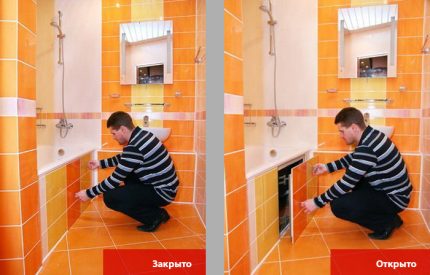
Hinged hatches are arranged according to a simple principle: on the one hand there is a fixing fastening, on the other hand, a supporting mechanism. When the latch is opened, the door just leans forward, moves from a vertical position to a horizontal one.
Push models are classified as “invisible”. They are difficult to notice, since the material of the hatch facing often coincides with the overall decoration of the walls.
To access the plumbing cabinet, you need to slightly press the panel, after which it will move forward. Then there are various ways of further opening - either plowing or pushing to one side.
Choosing the hatch by the method of opening, it is necessary to analyze the installation location and decide which model to mount is appropriate, and which will cause difficulties in the process of servicing devices or components.
With selection and device steps tile access hatch The following article, which we recommend reading, will introduce you.
Classification # 2: by material of manufacture
Factory models can be divided into two large groups. The first includes metal products made of stainless steel and equipped with high-quality fasteners.
They are a solid frame with a door that can be opened by any of the above methods. Most of the proposals are designed “for tiles”, but the doors can be decorated with any materials.
The second group includes plastic hatches. They are less reliable, lightweight and easy to install. The cost of plastic products is much lower. If a reliable steel hatch costs 3.5-4.5 thousand rubles, then a plastic analog has an average price of 200-350 rubles.
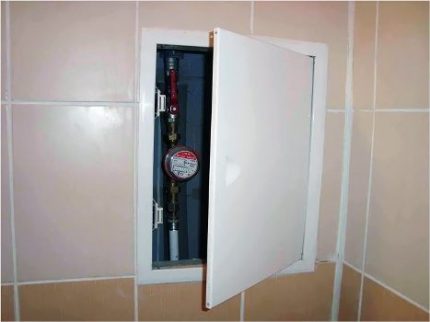
Unlike factory options, homemade hatches are not made of metal, although a metal profile is often used in the manufacture of the frame. For the hatch panel, an inexpensive but durable material is chosen: drywall, plastic, wood. It is convenient to stick tiles on drywall blanks if the task of the master is to create a “invisible” hatch.
Choosing this or that material, it is necessary to correctly evaluate its wear resistance and water resistance. If you take ordinary, and not moisture-proof drywall, then it will quickly lose its quality, begin to swell and crumble. A similar process occurs with untreated wood, which eventually deforms from excess moisture and temperature changes.
Classification # 3: by degree of disguise
This option of dividing into groups can be called conditional classification, since there is no clear distinction between the two categories of hatches: some of them are noticeable, the second are called “invisibles”.
The first group includes structures that stand out from the surrounding cladding. For example, these are white plastic hatches, which are noticeable due to their color and material. If you put such a hatch behind the toilet, it immediately catches your eye, however, it does not spoil the overall picture, as it is combined with plumbing fixtures in color.
Invisibles are visually hidden structures. Masking occurs due to the use of the same ceramic tile in the wall and hatch covers.
Thanks to the frame sizes and tile joints adjusted to the tile elements, the hatch plane merges with the walls. As a result, it is difficult for an ignorant person to determine where the technical hole is.
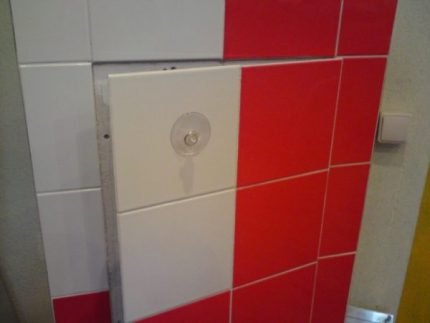
The advantage of the "invisible" is the complete merger of the manhole cover with the wall, so that the wall decoration looks solid, untouched.
Classification # 4: at the installation location
It would seem that all plumbing hatches for a toilet or bath are installed in the wall. This is a common location, but there are also ceiling and floor views.
Holes in the ceiling are needed to service the communications that are above the suspended structures. Such modifications are more accurately called revision, rather than plumbing, as they provide access to ventilation lines and electrical wires.
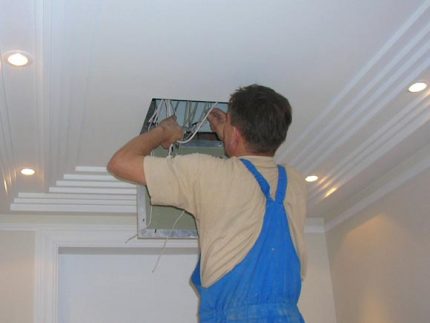
Holes located in the floor lead to sewer pipes or water pipes that are located below the level of the finish. This arrangement of communications is not typical for typical wiring, but it can occur when the floor is raised or thick insulation is created (for example, in private houses or on the first floors of multi-apartment buildings).
Hatches installed in the floor or in the floor ducts lead to the places where pipes are connected, turns, gangways - that is, to structures that need maintenance and cannot be walled up tightly. There were cases when, in order to access the place of pipeline rupture at the junction of the individual elements, it was necessary not only to remove the finish coating, but also to hammer the screed.
In addition, hatches mounted in floor protection boxes and tile screenwhich is under the bath.
Hatch Installation Instructions
The nuances of the installation, as well as the choice of tool, completely depend on the type of hatch and the material of the partition. Consider two options for mounting the hatch - the factory model and a home-made revision design for the bath.
Installation of the metal model “under the tile”
To install a hidden hatch, tiled, you will need a puncher, a screwdriver, liquid nails with a gun, a spatula, a set of screwdrivers, a marker and a tape measure for marking, a sponge for stripping.
The factory model with a metal frame will be mounted in a false wall made of drywall prepared for facing with ceramic tiles. In order for the panels to withstand the additional load, first it is necessary to make mortgages from the metal profile along the perimeter of the hatch.
The final touch is to frame the hatch with a plastic corner. Thin plastic, however, at the first stage, in the process of marking and cutting the window, it is necessary to take into account its thickness. After finishing work, there should be a gap of no more than 2 mm between the plastic edge of the door and the frame.
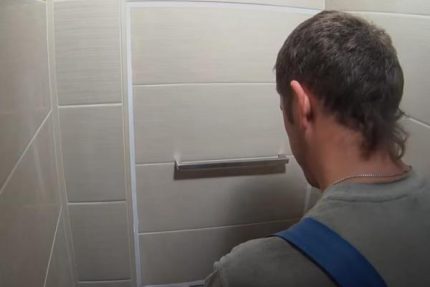
If the partition is made of plastic, then plastic is also used instead of tiles to decorate the door. The hatch will weigh less, but mortgages are necessary in any case, otherwise the metal structure cannot be fixed.
Tips for making a bath hatch
A small hatch under the bathroom, in the place of installation of the harness, is useful when replacement is required plastic siphon or leak repair due to depressurization of the connections. The same hatch can be installed on the other hand, but already to create a niche for disinfectants and detergents.
To work, you will need a metal profile, a piece of drywall and tile, which made the bathroom and screen under the bathtub.
If you need to use the hatch infrequently, the seams between it can be filled with a screen silicone sealant. It will fill the gap, and the door will look more organic and less noticeable. If necessary, the hardened sealant can be cut through with a construction or office knife.
Sizing Rules
The most difficult to fix errors associated with the wrong choice of dimensions of the plumbing hatch. When installing structures that serve several devices, it should be remembered that in addition to monthly readings from metering devices, occasionally it will be necessary to replace or repair “in place”, for which a small window will not be enough.
The larger the inspection hatch, the wider the coverage area and the possibility of repair work. It is good if all significant pipe connections, shut-off valves and devices requiring regular maintenance fall into the open technical area.
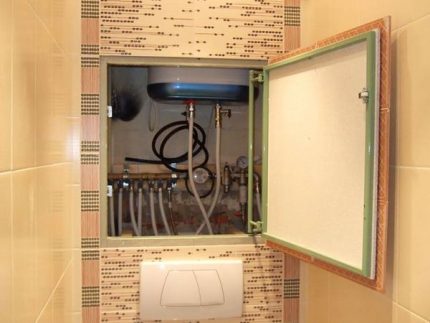
Factory models have typical sizes, for example, 55x45 cm or 70x50 cm. When producing hatches “for tiles”, manufacturers are guided by the popular standards of facing elements.
There are no specific standards for self-made structures, you need to start from the dimensions of the technical hole and the possibilities of creating a functional hatch from improvised materials.
Conclusions and useful video on the topic
There are a lot of features of the installation of homemade products and factory models. To learn about some of them, we suggest watching interesting videos.
Video # 1.How to install a metal hatch under a tile in a vertical corner box - recommendations of the Praktika specialists:
Video # 2. Installation of the “invisible” hatch from A to Z:
Video # 3. Unusual bath solution:
Installation of inspection hatches is carried out during repair work. If you are accustomed to independently make wall or floor cladding, it is not difficult to equip a technical cabinet with a convenient door. The choice of factory models is large enough, but if you want, you can make a neat hatch yourself using drywall, tile or plastic panels.
It is possible that you have your own experience in installing a hatch in the bathroom, which you want to share with visitors to the site. Perhaps your information will be extremely useful. Please write comments in the block below, ask questions, post a photo on the topic of the article.

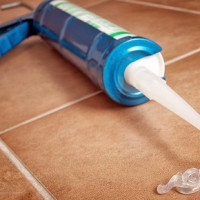 Sealant for the bathroom: types, selection tips and instructions for use
Sealant for the bathroom: types, selection tips and instructions for use  How to choose a hydraulic pipe bender: types of equipment and its features
How to choose a hydraulic pipe bender: types of equipment and its features 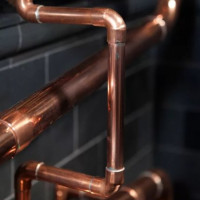 Copper pipes and fittings: types, marking, features of the arrangement of a copper pipeline
Copper pipes and fittings: types, marking, features of the arrangement of a copper pipeline 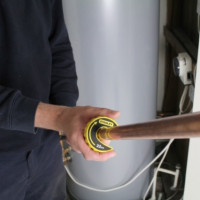 Pipe cutter for copper pipes: types, selection tips, rules and nuances of use
Pipe cutter for copper pipes: types, selection tips, rules and nuances of use 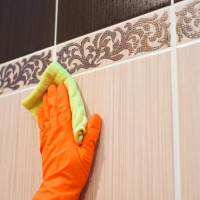 How to remove fungus in the bathroom: the best folk and professional ways
How to remove fungus in the bathroom: the best folk and professional ways 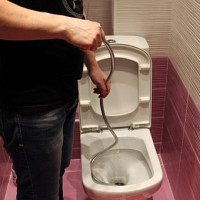 A cable for cleaning pipes: types, how to choose the right + instructions for use
A cable for cleaning pipes: types, how to choose the right + instructions for use  How much does it cost to connect gas to a private house: the price of organizing gas supply
How much does it cost to connect gas to a private house: the price of organizing gas supply  The best washing machines with dryer: model rating and customer tips
The best washing machines with dryer: model rating and customer tips  What is the color temperature of light and the nuances of choosing the temperature of the lamps to suit your needs
What is the color temperature of light and the nuances of choosing the temperature of the lamps to suit your needs  Replacement of a geyser in an apartment: replacement paperwork + basic norms and requirements
Replacement of a geyser in an apartment: replacement paperwork + basic norms and requirements
Paradoxically, I did not try how many different hatches - everyone somehow “suffered” from increased moisture, as a result, wear and rust did not take long to wait. It was interesting to read about folding ones, I think it’s worth trying to test, at least, this option. Already eyeing certain models. I hope this type will be more durable.
Good recommendations, it’s a pity, we didn’t come across 10 years ago ... They attached a wing to the house, migrant workers did plumbing there. It’s normal, in principle, if it weren’t for one “but” - the bathtub was closed up tightly, without access at all. I don’t know, foolishly or avenged, I strictly treated them very strictly. And, most importantly, she somehow didn’t think about it at all, paid off. Then it was very “fun” when the siphon flowed ...